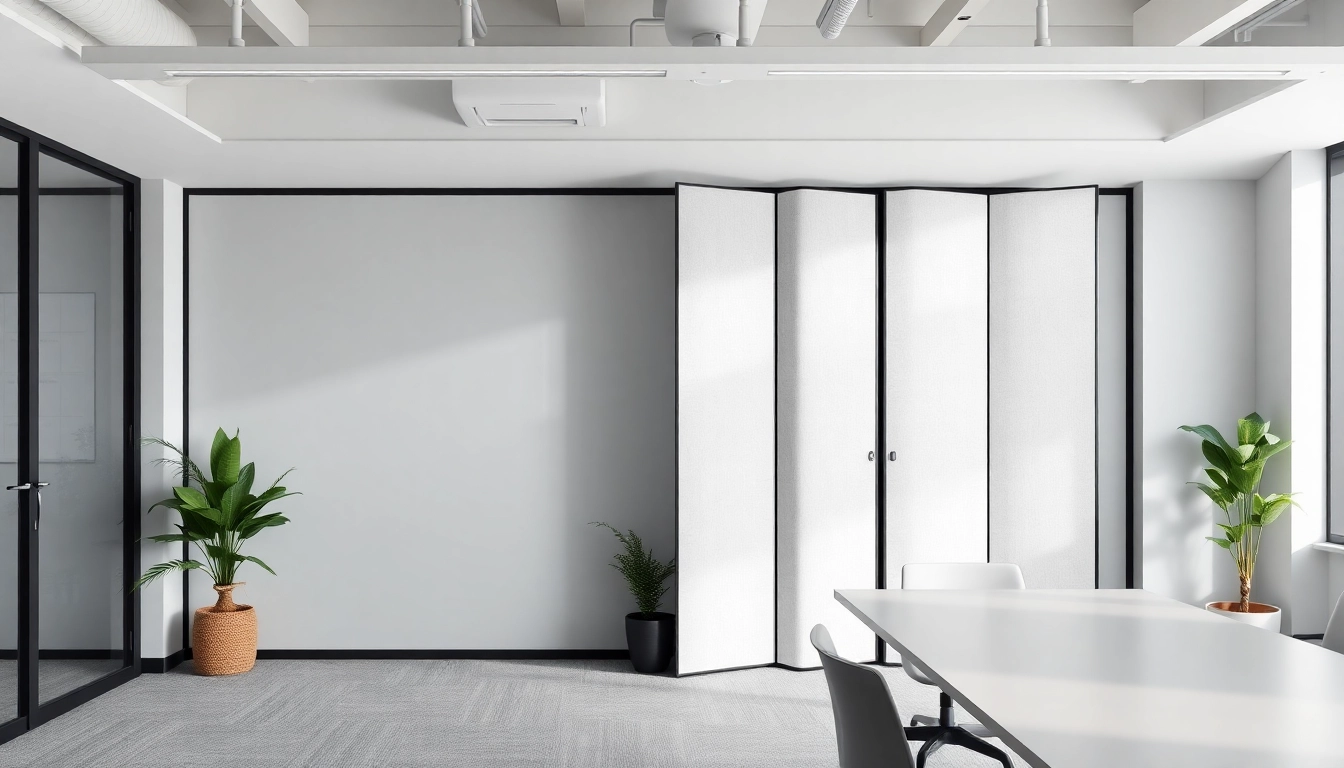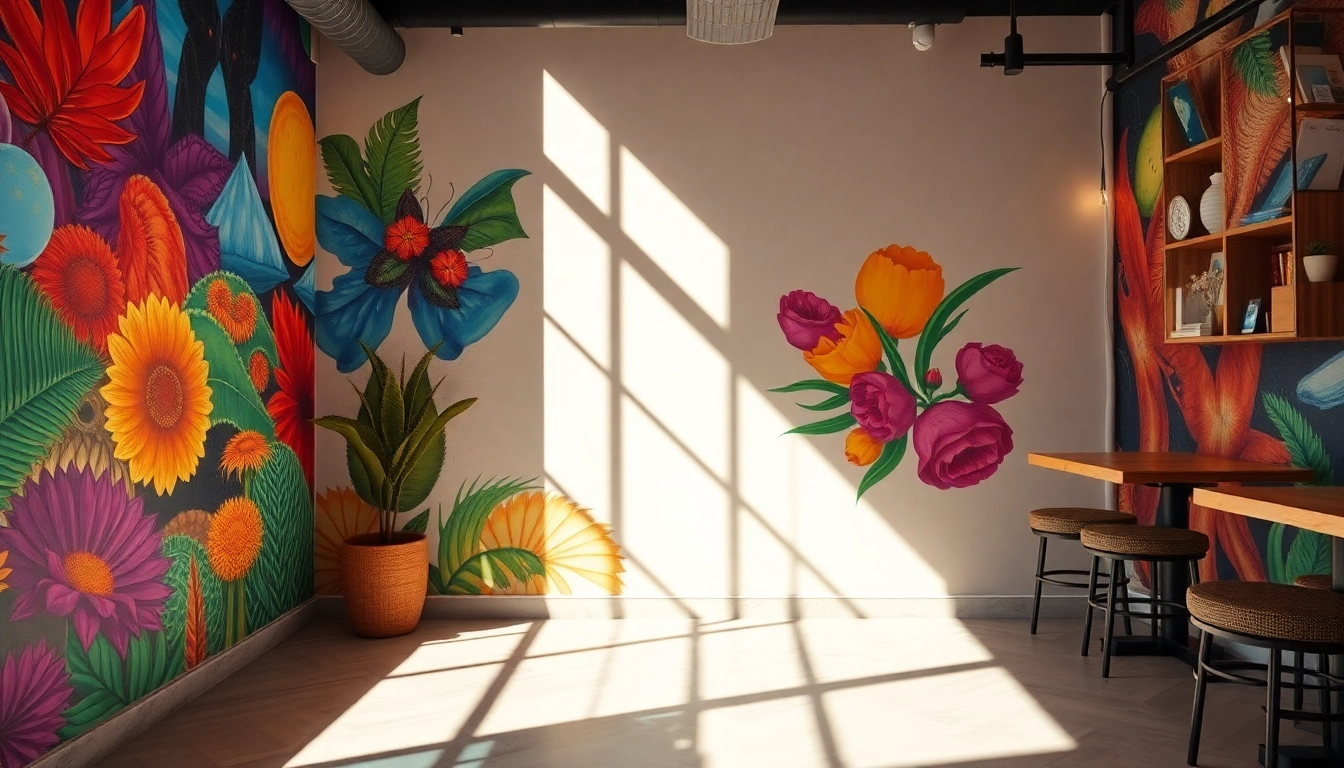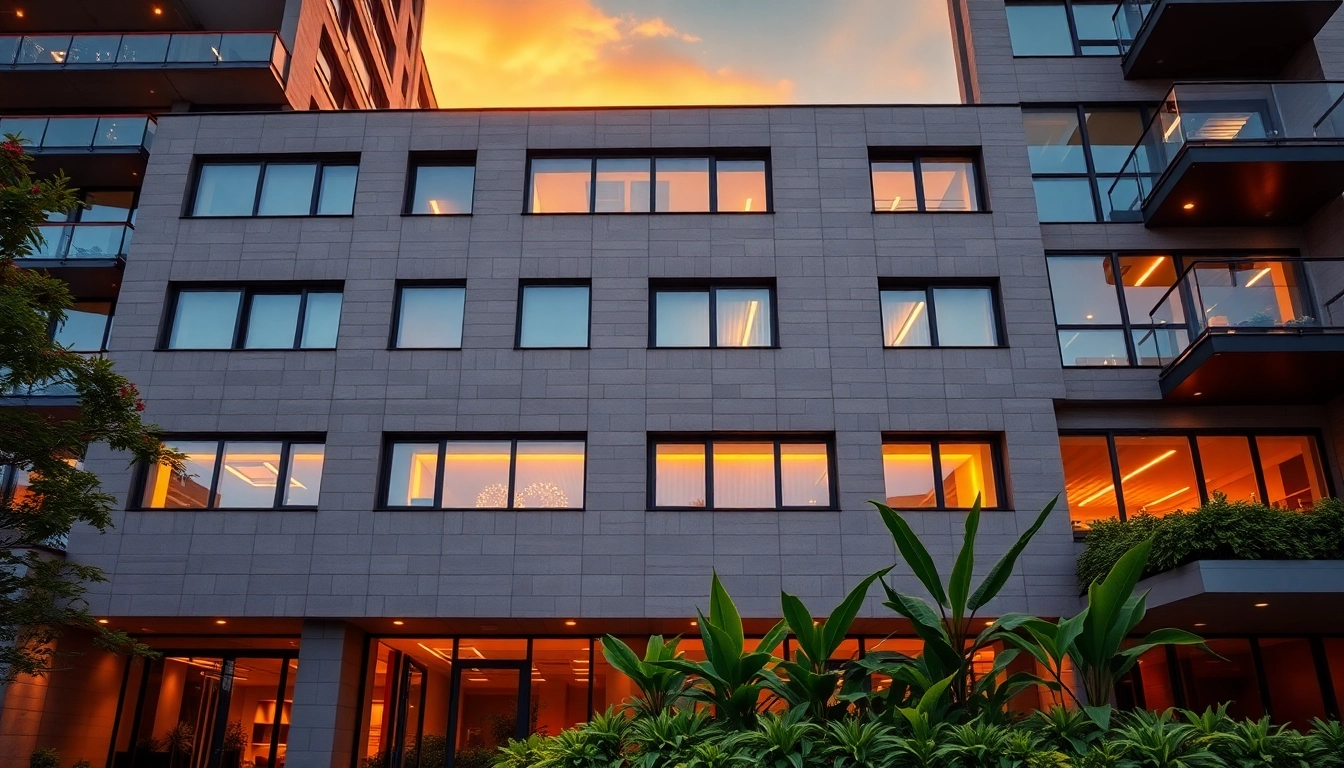Understanding Folding Partition Walls
What is a Folding Partition Wall?
A Folding Partition Wall is an innovative solution designed to create versatile spaces in both commercial and residential environments. These walls consist of multiple panels that can be folded or collapsed to open up or divide areas quickly and efficiently. Unlike traditional walls, which are fixed structures, folding partitions offer adaptability and flexibility, allowing spaces to be reconfigured as needs change.
Typically constructed from materials such as wood, metal, or glass, they provide both aesthetic appeal and functional utility. The folding mechanism enables easy movement and setup, making these partitions ideal for spaces that undergo frequent modifications, such as conference rooms, classrooms, and event halls.
Benefits of Using Folding Partition Walls
Implementing folding partition walls in your space comes with a myriad of benefits. Some of the key advantages include:
- Flexibility: Folding partitions allow for the rapid reorganization of space, providing options for different activities, such as meetings or social gatherings, without the need for permanent construction.
- Space Efficiency: They help maximize available square footage by allowing for one room to serve multiple purposes, which is particularly beneficial in urban environments where space is at a premium.
- Cost-Effectiveness: By avoiding costly renovations or full builds, folding partitions present a more budget-friendly solution for changing environments.
- Enhanced Acoustics: High-quality folding partitions are designed to provide soundproofing, making them suitable for environments that require privacy and noise control.
- Stylish Design: With a variety of materials and finishes available, folding partitions can enhance the aesthetic appeal of a space while still offering functionality.
Common Applications in Various Settings
Folding partition walls can be found in several environments, showcasing their versatility. Here are some common applications:
- Commercial Spaces: Many businesses utilize folding partitions in office layouts to create meeting rooms, break areas, or collaborative spaces. The ability to quickly alter an office layout can enhance employee productivity and comfort.
- Educational Institutions: Classrooms often benefit from flexibility; folding partitions allow multiple sessions or classes to occur simultaneously in one space without disruption.
- Event Venues: Whether for weddings, conferences, or gatherings, folding partitions create adaptable spaces that can host various event sizes and types.
- Healthcare Facilities: In hospitals or clinics, folding walls can create temporary examination rooms or private areas for consultations, thus responding quickly to patient care needs.
- Residential Use: Homeowners can employ folding partitions to segment living areas or create private spaces in studios or open-plan homes.
Choosing the Right Folding Partition Wall
Factors to Consider for Your Space
When selecting a folding partition wall, there are several critical factors to consider to ensure functionality and aesthetic alignment with your space:
- Space Size: Measure the area to determine the appropriate size and number of panels needed for effective division without overcrowding the available space.
- Usage Frequency: Consider how often you plan to change configurations. High-frequency use may necessitate durable designs with easy operation features.
- Acoustic Needs: Assess whether you need sound attenuation; if privacy is a priority, look for partitions with acoustic insulation qualities.
- Style and Aesthetic: Choose materials, colors, and designs that complement your existing décor. Options range from sleek glass to warm wood finishes.
- Budget: Factor in both upfront costs and long-term maintenance; investing in quality can save money on repairs and replacements.
Material Options for Folding Partition Walls
The material of a folding partition wall can significantly impact its performance and look. Here are popular choices:
- Wood: Provides a classic and warm look, suitable for offices or residential areas, often with custom finishes.
- Glass: Ideal for modern spaces, glass partitions allow natural light to flow while creating a sense of openness. Some options include frosted or tinted glass for added privacy.
- Fabric: Frequently used in portable solutions, fabric partitions can be custom printed and are lightweight, making them easy to relocate.
- Metal: Durable and secure, metal partitions can provide a modern aesthetic while ensuring longevity and strength.
Design Styles and Customization
Folding partition walls are available in an array of designs and can be customized to fit diverse architectural styles:
- Accordion Style: A classic design where panels fold back against each other, useful for maximizing space.
- Horizontal or Vertical Sliders: These partition walls glide along tracks, providing smooth operation and flexible layout alteration.
- Custom Branding: Businesses can opt for branded panels or unique designs that reflect their corporate identity.
Installation Process for Folding Partition Walls
Preparing Your Space for Installation
Before installing your folding partition wall, proper preparation is essential to ensure a smooth and efficient setup:
- Assess Structural Support: Ensure that walls or ceilings can support the weight of the partition system, especially if it is a large or heavy design.
- Designate Installation Area: Mark out where the partition will be positioned and ensure the area is clear of any obstructions.
- Gather Tools and Equipment: Depending on whether you’re hiring professionals or going DIY, gather necessary tools, including drills, levels, and brackets.
Step-by-Step Installation Guide
Follow these general steps for installing a folding partition wall:
- Install the overhead track: This is the first step, which involves securing the track to the ceiling or wall as per manufacturer’s specifications.
- Attach panels to the track: Depending on your system, slide each panel onto the installed track, ensuring they are adequately spaced.
- Secure the bottom rail: Install any required bottom tracks or guides that will keep the panels aligned when folding or moving.
- Test the functionality: Once installed, ensure all panels move smoothly without obstruction. Make any adjustments as necessary.
Professional vs. DIY Installation
Deciding whether to hire a professional or undertake DIY installation will depend on your comfort level and the complexity of the system:
- Professional Installation: Recommended for large, heavy, or complex systems, as professionals will ensure proper alignment, soundproofing, and materials are correctly utilized.
- DIY Installation: Suitable for lighter, portable options. Many prefab systems come with detailed instructions and pre-assembled components that make self-installation feasible.
Maintaining Your Folding Partition Wall
Regular Maintenance Tips for Longevity
To ensure that your folding partition wall remains functional and visually appealing, regular maintenance is necessary:
- Cleaning: Dust and grime can build up on panels. Use appropriate cleaning solutions based on the material to maintain surface integrity.
- Lubrication: If applicable, periodically lubricate the tracks and moving parts to prevent friction and wear and tear.
- Visual Inspections: Regularly inspect for any signs of damage or misalignment and address issues promptly to avoid larger problems later.
Common Issues and Solutions
Like any structural feature, folding partitions can face some common issues. Here are solutions for maintaining your system:
- Sticking Panels: If panels are sticking, clean the tracks and ensure they are lubricated. Realign if necessary.
- Noise Issues: If sound isolation is not meeting your expectations, check for gaps and ensure all seals are intact. Consider adding drapery or acoustic treatments if needed.
- Panel Misalignment: If panels are not aligned properly, it may require adjustment of the track or the panels themselves to regain proper functionality.
When to Seek Professional Help
There are times when expert intervention is necessary to maintain your folding partition wall:
- Severe Damage: If panels are broken or severely misaligned, enlist a professional to ensure safe handling and repairs.
- Complicated Installations: If needing to move or adjust a complex system, professional assistance can save time and prevent damage.
- Regular Upkeep: Schedule professional maintenance checks periodically, particularly for high-use environments.
Future Trends in Folding Partition Wall Design
Innovations in Materials and Technology
The future of folding partition walls is set to evolve with advancements in materials and technology. Potential developments include:
- Smart Technology: Integrating smart systems that allow automation of panel movement and configurations via mobile apps or smart home systems.
- Advanced Materials: Continued exploration into lightweight materials that maintain durability while reducing weight for easier manipulation.
- Augmented Reality (AR): Tools that simulate different partition layouts can aid users in visualizing changes before implementation.
Eco-Friendly Options in Folding Partitions
As sustainability becomes a priority in construction and design, eco-friendly folding partition options are developing:
- Recycled Materials: Manufacturers are increasingly using recycled components in partitions to lower environmental impact.
- Low-VOC Finishes: Non-toxic paints and finishes that reduce harmful emissions are becoming the norm, contributing to healthier indoor environments.
- Energy Efficiency: Designs that improve insulation can lower energy costs and enhance sustainability in commercial settings.
The Impact of Layout Flexibility on Workspaces
As businesses continue to adapt to flexible work environments, folding partitions enable the layout changes essential for modern work culture:
- Collaboration Spaces: The versatility of folding partitions allows for open collaboration areas that can, at a moment’s notice, shift into private work settings.
- Health and Safety: In a post-pandemic world, flexible layouts can help ensure safety by allowing for proper distancing and the ability to create isolated spaces.
- Cultural Adaptation: As work cultures shift towards flexibility, partitions allow spaces to adapt to the needs of diverse employee groups, enhancing satisfaction and productivity.



